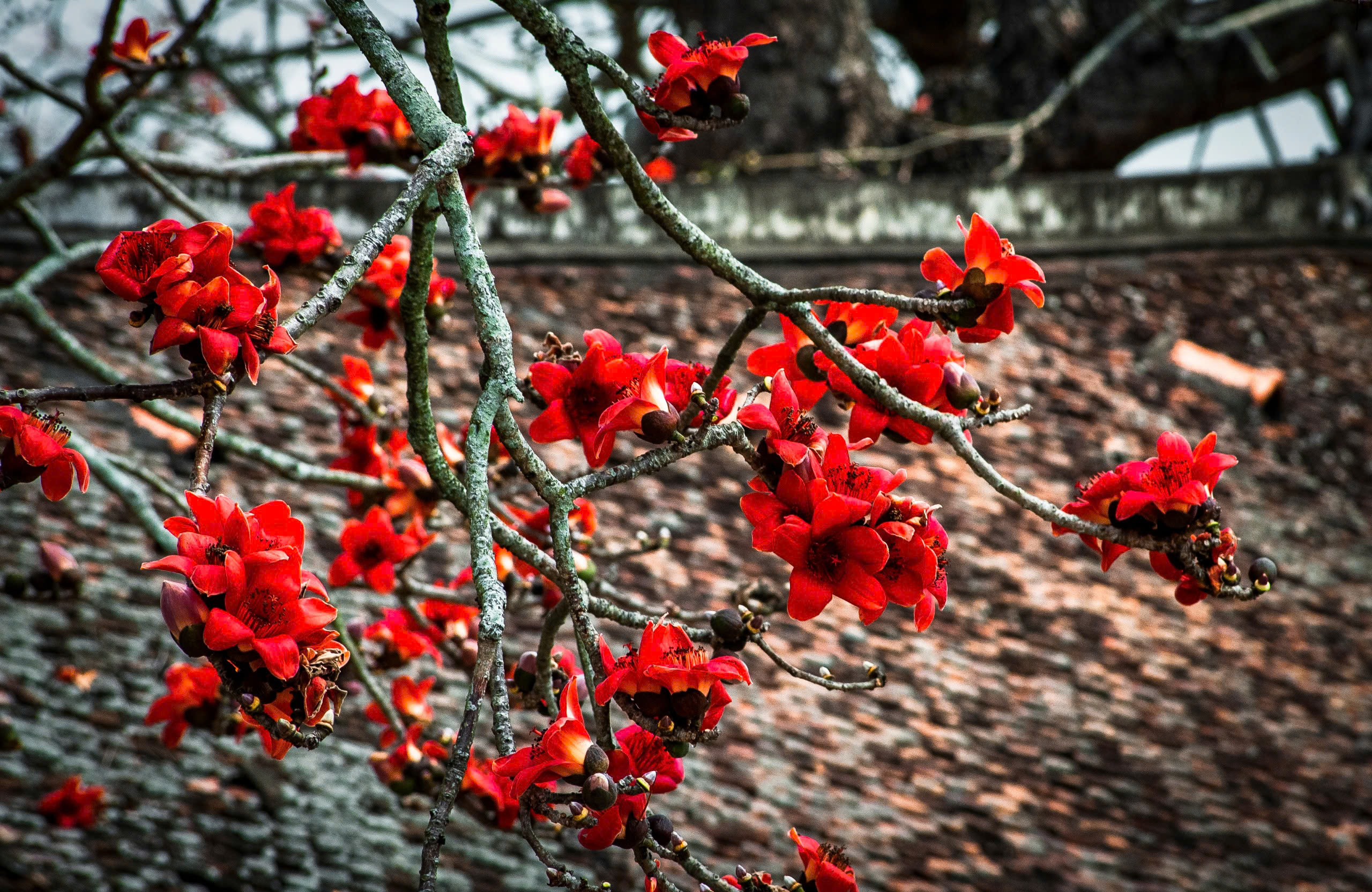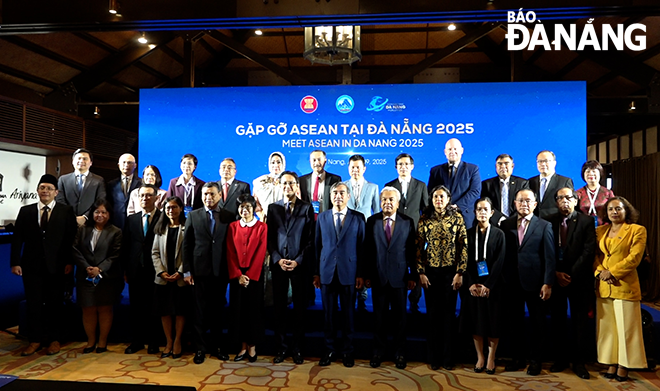May arrives with early summer rains starting to pour down, drawing water from the upper streams into the North-western region. Terraced rice fields take off their boring brown coat of winter to enter a new crop season.
These days, when travelling through majestic fields in Sapa Town and Bat Xat District in Lao Cai Province, Mu Cang Chai District in Yen Bai Province, Hoang Su Phi District in Ha Giang Province, and Bac Yen District in Son La Province, an incredible sight of terraced fields soaked with water inspires many visitors to come to the North-west and explore this legendary beauty.
Here are some amazing photos of terraced rice fields in North-western region.
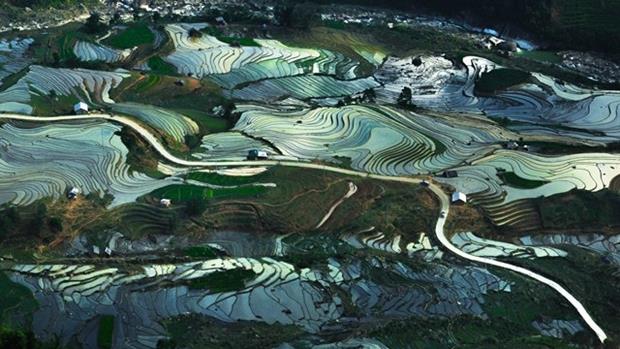 |
| In early summer every year, hamlets in the northwest again fall into 'pouring water season' |
 |
| An incredible sight of terraced fields |
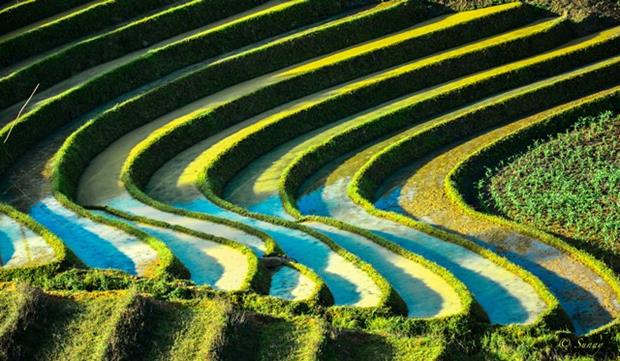 |
| Not vast in size like the paddy fields in the deltas, terraced fields in the highlands of the North-west overlap from layer to layer as ladders reaching to the blue sky. |
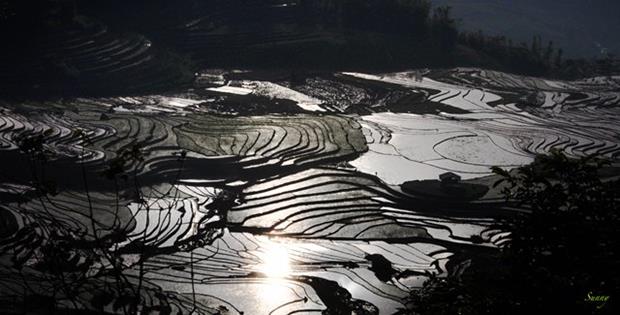 |
| The North-west rice fields filled with water until planting, sparkling like a coloured mural amidst jungles and mountains. |
 |
| Water runs from field to field, rolling in the colour of mulch mixed with the reflected blue sky, creating a spectacular picture. Perhaps, no artist can colour such vivid and energetic paintings like the north-western farmers. |
 |
| The North-western region, in the pouring water season, is one of the unique tourism products of the northern mountainous region, attracting thousands of domestic and foreign visitors each year. |
 |
| The typical characteristics of the terraced fields are high steep levels and winding terrain. Farmers mainly utilise natural water sources to cultivate rice, so making the water run into their fields is an art that requires talented and industrious efforts. |
 |
| In the uplands, farmers only plant a single crop a year. When the first rains of the summer have fallen, local farmers also start bringing water into their fields. |
 |
| Farmers in the north-western region often dry their fields during May and June. After that, they pour water into the soil. The water flows from ravines through bamboo tubes to fill the fields, creating multicoloured paintings: the yellow of the alluvium, the greenish colour of young rice sprouts freshly sown and the reflected colour of the blue sky. |
 |
| When adequate water has been drawn in, the Mong and Giay people start sowing seeds. A few days later, when green fields began to appear, they drain the water so that the rice seeds may germinate. Later on, as those hopes burst out of the water, farmers pour more water back onto their plots to let the rice flourish. |
 |
| Rice terraces in the water season bring a wild look, a true natural phenomenon of the North-west. |
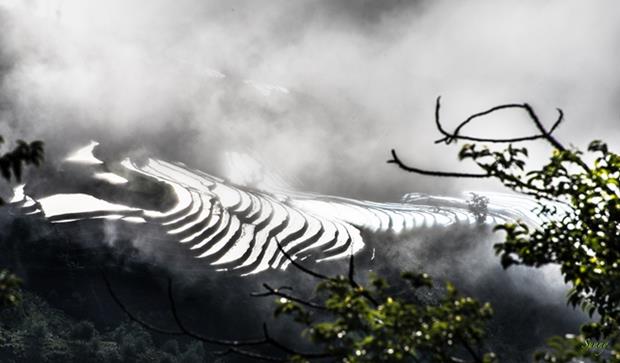 |
| The sun silvers each layer of water, giving the North-west's beautiful fields a great vibrancy with different light and dark colours. |
 |
| Alluvial colour of the terraced fields shows up on the majestic North-west skyline, reflecting the immense beauty of nature combined with manpower in this highland. |
(Source: Nhân Dân Online)
.















